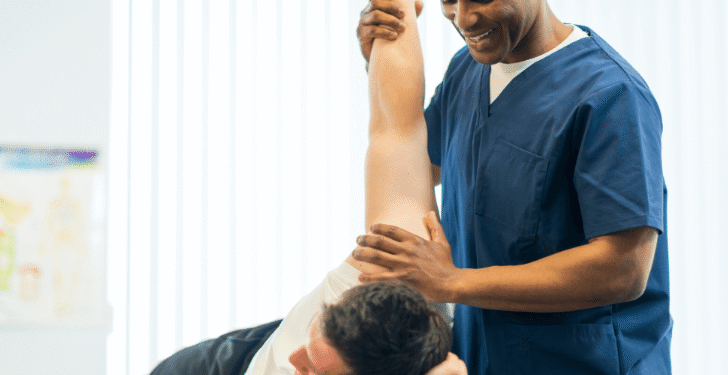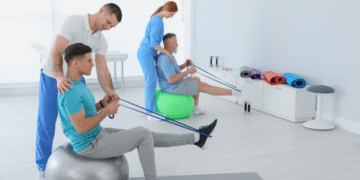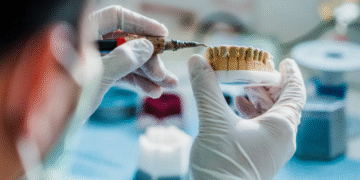Physical therapy supports spinal health after non-surgical medical treatment. Therapists evaluate posture, muscle strength, range of motion, and alignment to develop individualized rehabilitation plans. These customized programs focus on the underlying causes of pain, rather than merely covering symptoms through passive treatment. Here is more information about the role of physical therapy in spine doctor treatment plans:
Enhancing Posture and Alignment
Postural alignment is a key component in long-term spinal stability and recovery success. Proper posture helps reduce pressure on the spinal discs and prevents overloading the supportive structures over time. Adjustments to sitting, walking, and standing positions are incorporated into physical therapy programs. The therapist recommends exercises to stabilize muscles along the spine and shoulders. Techniques such as wall slides, chin tucks, and postural retraining aid in developing body alignment awareness. This helps patients modify daily habits to improve spine health. Strengthening muscles like the rhomboids and abdominals provides natural support for the spine. Minor changes in the position of the head or shoulders can alter spinal balance. Postural correction also reduces nerve irritation caused by slouching or spinal misalignment. Posture retraining can help prevent the development of chronic tension, particularly in the lower back and neck.
Strengthening Core and Support
Well-conditioned core muscles protect the spine when moving, lifting, or rotating. They also minimize joint stress by reducing the need for compensation. Physical therapists develop programs that focus on the deep abdominals, gluteal muscles, and paraspinal muscles. Body-weight exercises and resistance bands help develop endurance without placing stress on the back. Exercises such as bird dogs, pelvic tilts, and planks are typically included to build balance and control.
The activation of the transverse abdominis and multifidus is crucial in providing vital lumbar support during repetitive daily movements. These muscle groups are used by athletes, such as runners and gymnasts, to prevent injury and achieve performance. Better core stability leads to improved coordination of the hips and lower back during physical activities. This strength also reduces the risk of acute spasmodic back or disc-related pain. Patients recovering from spinal injections or procedures can use light core activation drills. A well-developed support system enhances the mechanics of the spine and minimizes general joint compensation stress.
Improving Elasticity and Movement
Poor spine movement or limited muscle function around the spine can restrict range and may cause chronic stiffness or pain. A spine doctor uses stretching exercises to enhance mobility in stiff areas, such as the hips and hamstrings. Passive methods, including manual manipulation and assisted stretching, can also address stiff joints. Cat-cow poses, lumbar rotations, and knee-to-chest stretching increase spinal flexibility.
Flexible muscles help reduce the impact on the sensitive structures of the spine and intervertebral discs. Sedentary individuals often experience stiff hip flexors, which can contribute to lower back pain. Flexibility makes it easier to walk, climb, or lift through improved joint coordination. With a more mobile spine, individuals may safely participate in rehabilitation exercises and daily movement. This decreases compensatory motions that result in shoulder, hip, or knee strain. Flexibility exercises can be more effective when applied slowly and combined with breathing and stability exercises.
Supporting Circulation and Healing
Enhanced blood flow supplies oxygen and nutrients, which are key for healing inflamed or damaged spinal tissues. Physical therapy uses rhythmic movement and organized activity to promote blood flow. Cardiovascular exercises like stationary cycling and aquatic therapy can stimulate blood flow without straining the spine. Metabolic wastes are washed out of inflamed regions, and swelling and pain are alleviated as blood circulation improves. Techniques like soft tissue massage, trigger point release, and manual therapy also increase circulation. Dynamic exercises that incorporate warm-up activities help stretch muscles and ligaments before restorative exercise begins. Increased circulation also helps avoid muscle atrophy that occurs during long periods of inactivity.
Work With a Spine Doctor
Including physical therapy in spinal care helps create a more holistic approach, which can quicken recovery and reduce setbacks over time. Patients are taught to maintain a proper posture, strengthen weak areas, and improve coordination in daily activities. As pain decreases, mobility improves, and confidence returns with regular and supervised physical activity. A spine doctor helps patients transition from passive treatment to active participation in their own spine health. Work with a spine doctor to boost recovery and begin a personalized rehabilitation plan.










